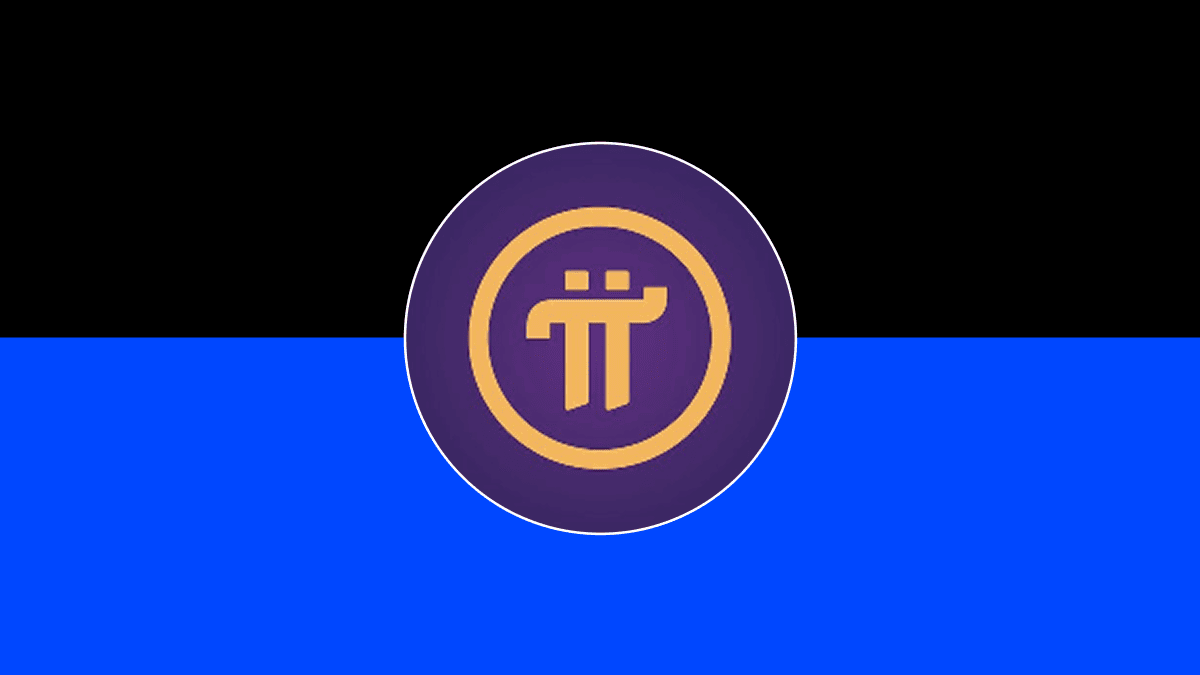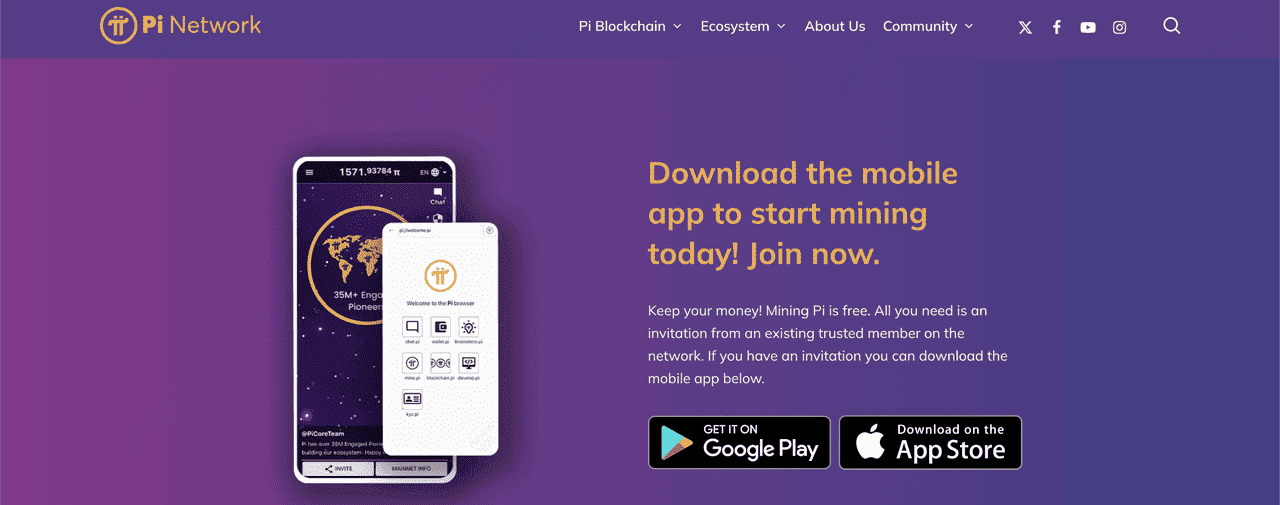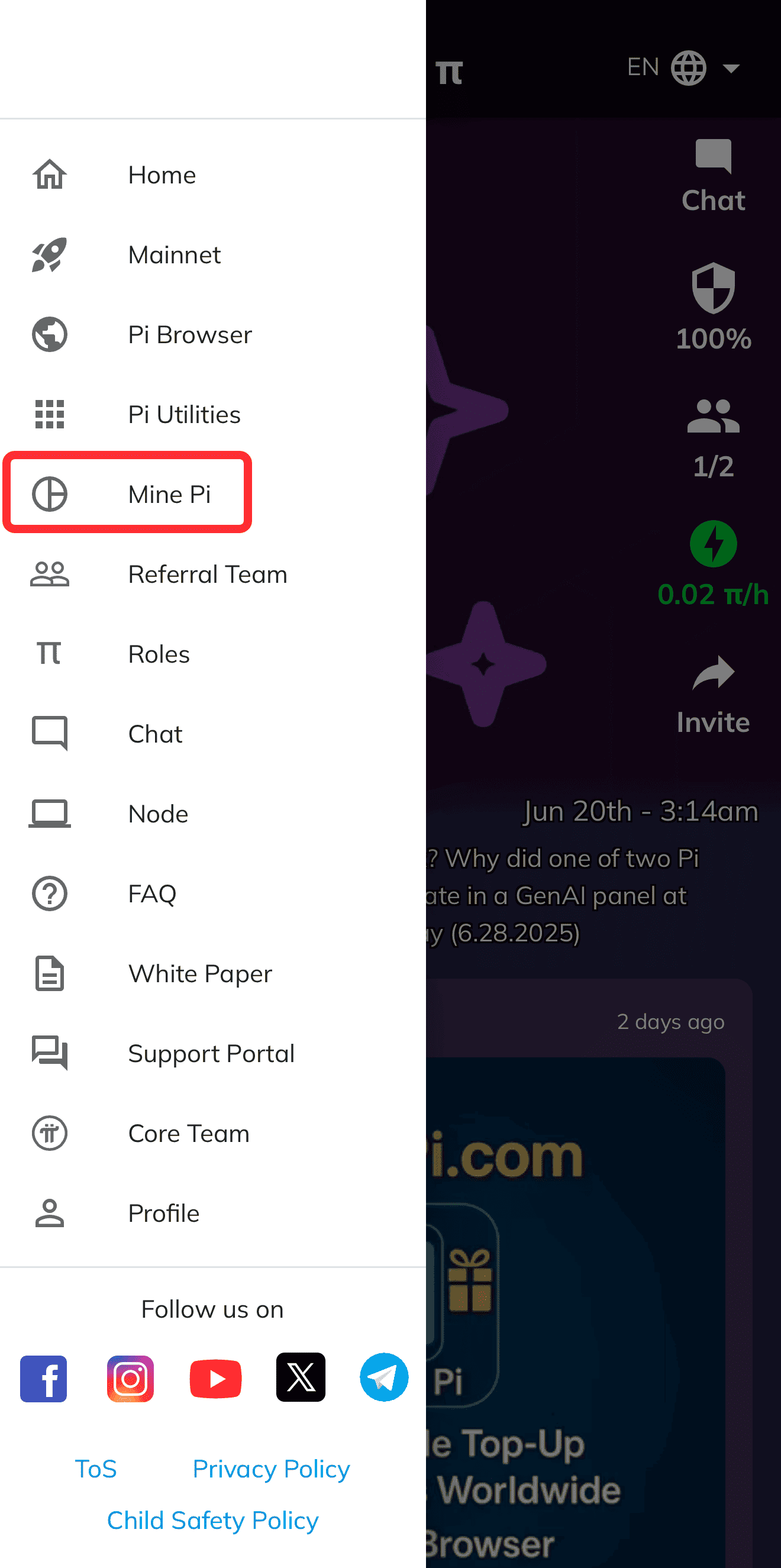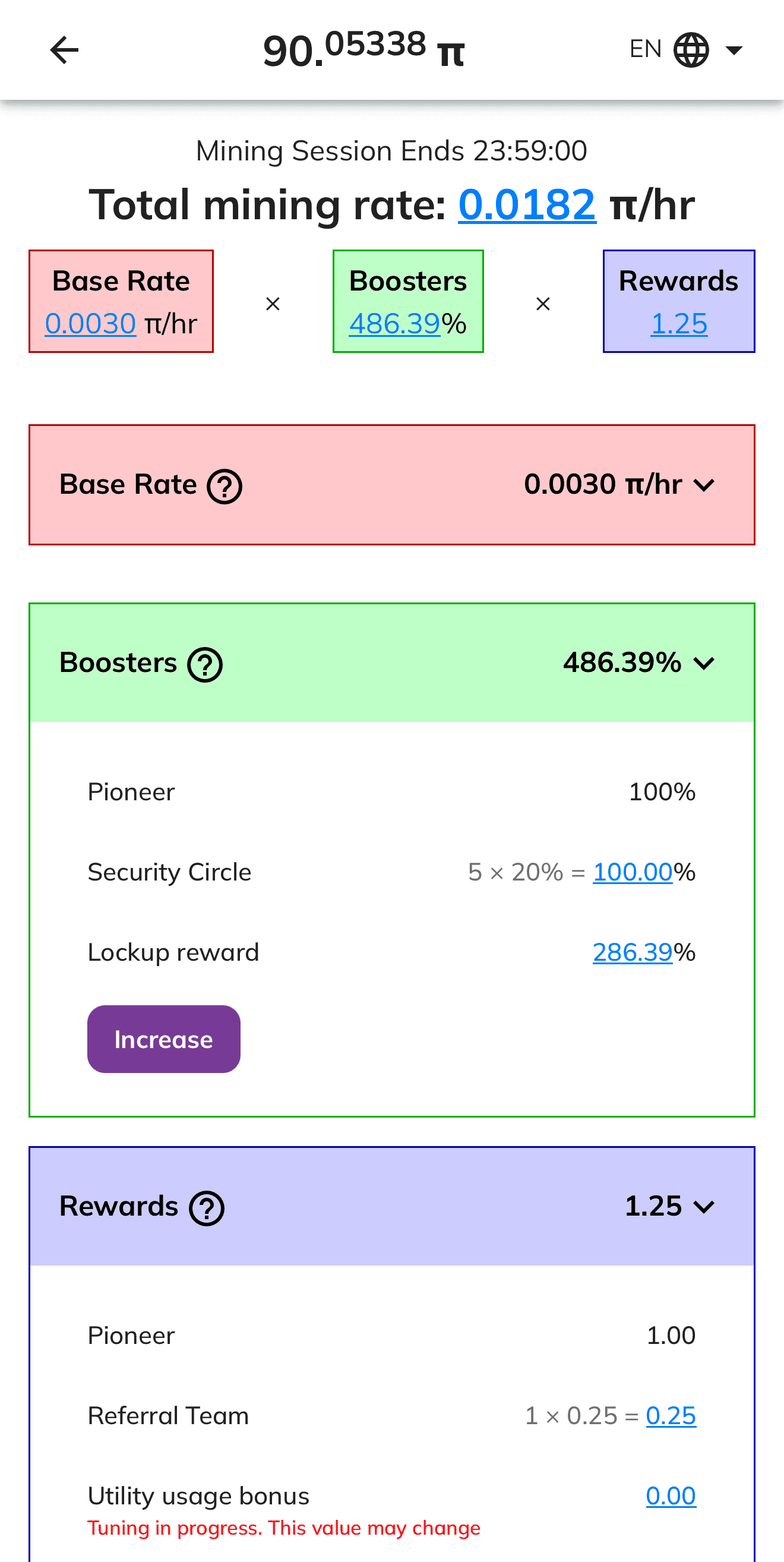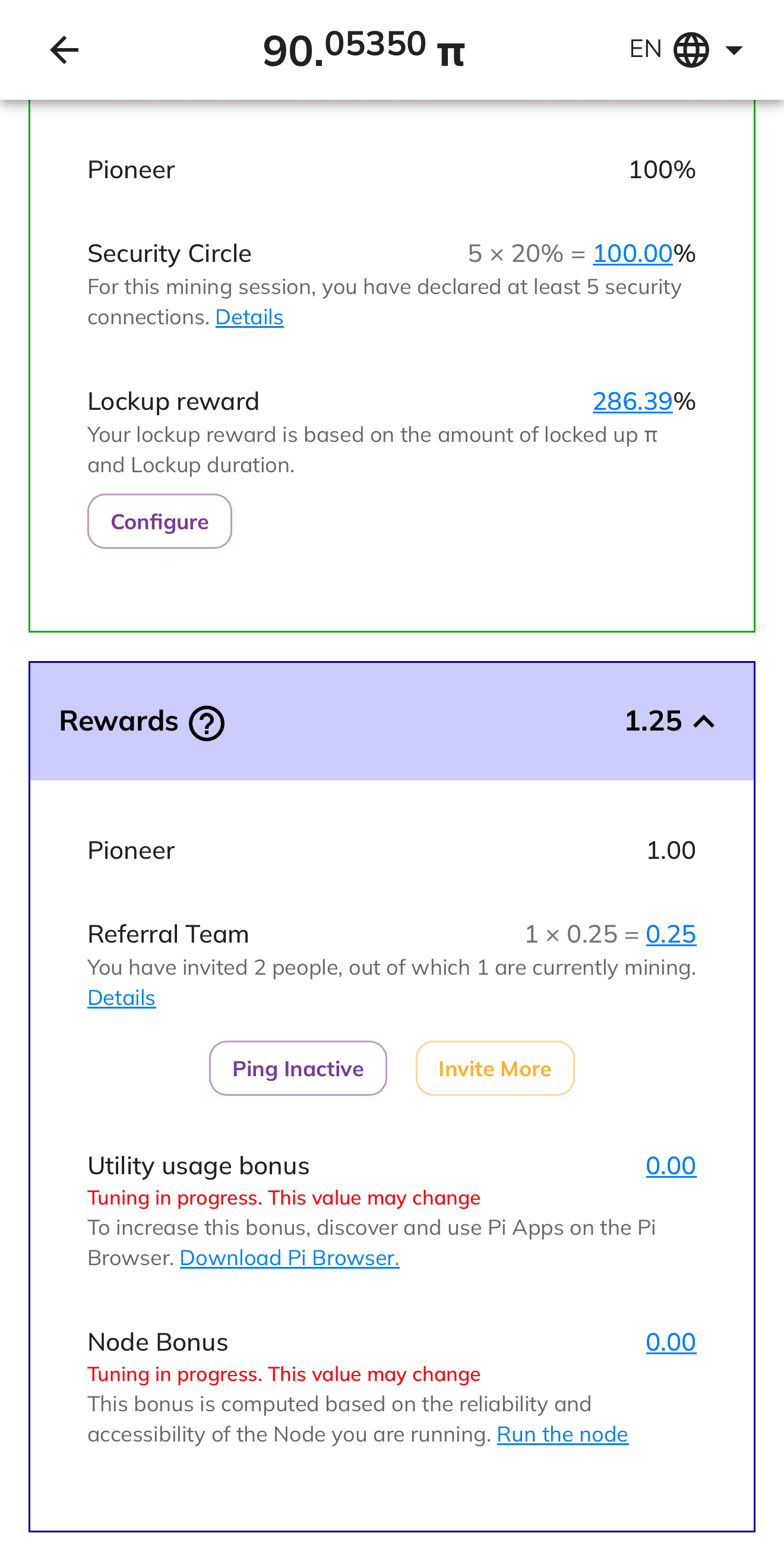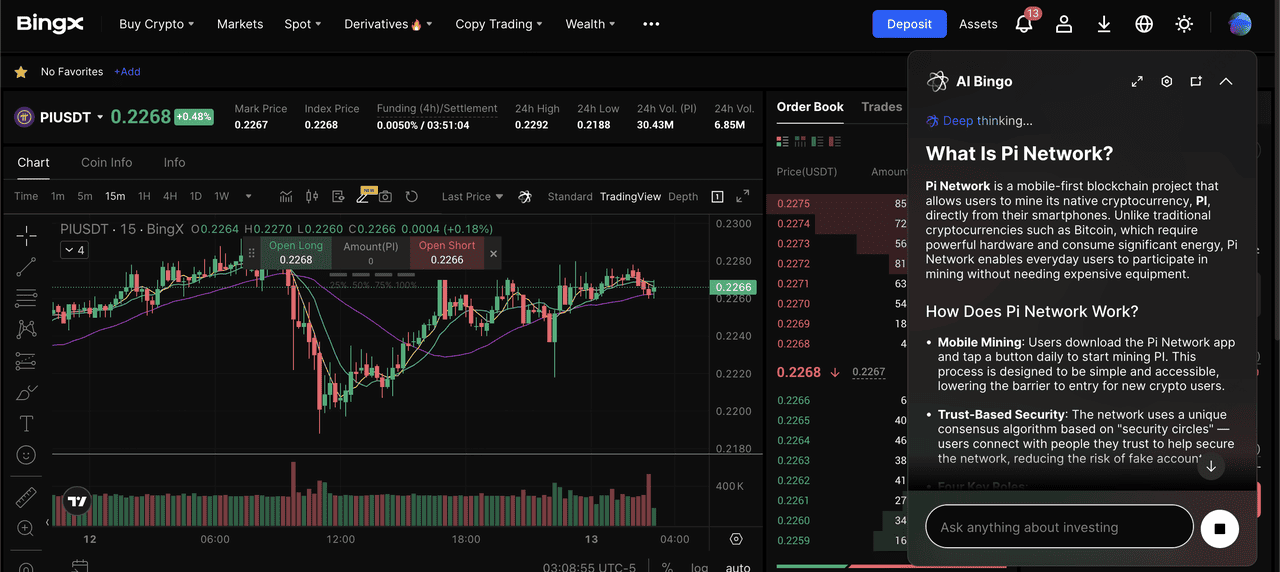With more than 70 million registered Pioneers worldwide,
Pi Network has rapidly become one of the largest mobile-first cryptocurrency ecosystems, enabling users to “mine” PI on their smartphone without expensive hardware or high electricity bills.
Founded in 2019 by Dr. Nicolas Kokkalis and Dr. Chengdiao Fan, the project advanced into its Open Network Mainnet on February 20, 2025, and launched a $100 million Ventures fund to support utility-driven apps. Major milestones in 2025 include the launch of protocol-level DEX/AMM and token-creation on Testnet on September 30, 2025, and the completion of the first “.pi” domain auction, spotlighting Pi’s shift from hype to practical infrastructure.
In this guide, we explore what Pi Network is, how it works, how to mine PI coins in 2025, and how you can trade PI futures on BingX.
What Is Pi Network (PI) and How Does It Work?
Pi Network is a Layer-1 blockchain designed to be operated and used by everyday people. Instead of energy-intensive Proof-of-Work, Pi uses the
Stellar Consensus Protocol (SCP), a Federated Byzantine Agreement (FBA) model, so phones can participate without heavy compute or battery drain. Users or “Pioneers” create security circles (small trust groups) that feed a global trust graph for transaction consensus.
In 2025, Pi added hands-on learning rails: the Pi Wallet surfaces a DEX/AMM preview that routes activity to Testnet so you can practice swaps, liquidity pools, and token workflows with Test-Pi before any Mainnet permissions expand. This is paired with .pi Domains, human-readable names for apps/merchants, using claim + renewal gates that require a working app and organic usage, meant to promote real utility over speculation.
How you earn and use PI: You tap the mining button daily in the mobile app; participation and trusted connections can improve rates. After
KYC and migration, you can use Pi in Pi-native apps and services, with Open Network enabling broader connectivity from Feb 20, 2025 onward.
Why this matters now: Pi continues to ship platform-level pieces and developer funding to expand real-world utility while keeping identity and safety central to growth.
Pi Network History, Latest News, and Upates
The journey of Pi Network began with its official launch on March 14, 2019 (Pi Day) by Stanford-educated founders Nicolas Kokkalis and Chengdiao Fan, with a mission of making cryptocurrency mining accessible to everyday mobile users.
• Phase 1 – Beta (December 2018 → March 2019): The mobile app was released in alpha on major app stores, onboarding the initial cohort of “Pioneers” and kick-starting the mobile-mining concept.
• Phase 2 – Testnet (March 14, 2020): A fully live Testnet environment was launched, complete with node software and the trust-graph consensus model, enabling early dApp testing and infrastructure build-out.
• Phase 3 – Enclosed Mainnet (December 2021): In this stage, the mainnet was live but remained behind an external connectivity firewall—Pioneers could perform internal transactions, migrate balances, and complete KYC, but external exchange trading and cross-chain links were restricted.
• Phase 4 – Open Network (February 20, 2025): On 08:00 UTC, February 20 2025, Pi Network officially launched its Open Network, removing the firewall and enabling external connectivity, trading on exchanges, full node participation, and cross-chain integrations. At launch, the network reported over 19 million identity-verified Pioneers and more than 10 million Mainnet migrations, surpassing its original targets.
• Ongoing Upgrades (Q4 2025): In October 2025, Pi introduced a new
AI-driven KYC process that allowed 3.36 million Tentatively KYC’d Pioneers to pass full verification, bringing total verified accounts to more than 14 million, with 2.69 million newly migrated to Mainnet. This update used advanced liveness checks and large-scale dataset analysis to ensure fairness and enforce Pi’s one-account-per-person rule.
In November 2025, Pi rolled out Pi Node Version 0.5.4, rebranding the desktop application as Pi Desktop. The update improved Node reliability, added open-port verification, enabled external link access, and made Pi App Studio directly accessible via the main navigation bar. The release also prepared the network for decentralized AI computing tasks in partnership with OpenMind, showcasing Pi’s evolving potential as an AI-ready blockchain infrastructure.
What Is PI Coin Utility and Tokenomics?
The Pi (PI) coin is the native cryptocurrency that powers the Pi Network ecosystem. It functions as a medium of exchange, governance asset, and utility token across thousands of Pi-native apps built within the network. Users can use PI for peer-to-peer payments, tipping creators, purchasing goods or services in Pi-powered marketplaces, and interacting with decentralized apps (dApps) inside the Pi Browser. As Pi transitions into its Open Mainnet, more applications, including DeFi tools, domain services, and AI-driven utilities, are integrating PI for in-network payments, smart-contract execution, and transaction fees.
Beyond daily transactions, PI is expected to gain further governance and staking utility as the ecosystem matures. The Pi Core Team has outlined plans for community voting mechanisms and staking incentives tied to validator participation and network security. This would allow verified Pioneers and node operators to lock PI in exchange for governance rights and potential yield, making PI not just a currency, but a driver of ecosystem coordination and long-term sustainability.
$PI Token Distribution
Pi Network has a total maximum supply of 100 billion PI coins. The distribution is designed to prioritize community participation and long-term sustainability:
• 80% is allocated to the community. This includes mobile miners or Pioneers, developers, validators or nodes, and contributors. These tokens are distributed through mining rewards, ecosystem incentives, and in-app activities.
• 20% is reserved for the Core Team and project contributors. This allocation rewards long-term builders, maintains operations, and supports development efforts.
To ensure fairness, the mining rate decreases over time as more users join and the total supply approaches its cap. This helps prevent inflation while rewarding early adopters and active contributors. Pi Network’s tokenomics are built around accessibility, utility, and gradual decentralization.
How to Mine PI Coins on the Pi App: A Step-by-Step Guide
Mining PI coins is designed to be simple, energy-efficient, and accessible to anyone with a smartphone, no expensive hardware, no excessive data usage.
Step 1: Download the Pi Network App
Go to the Google Play Store or Apple App Store and search for “Pi Network.” Download the official app developed by the Pi Core Team. Always verify you’re installing the correct version to avoid imitation apps.
Step 2: Create Your Account
Open the Pi mining app, sign up using your phone number or Facebook/Apple ID, choose a username and strong password. This becomes your identity in the Pi ecosystem.
Step 3: Use a Referral Code (Optional but Recommended)
Enter a referral code from an existing Pioneer. This helps you join a security circle from day one and may improve your mining rate.
Step 4: Complete Basic Profile Setup
Fill in your real name, verify your phone number or other identity details. This step helps prepare you for future KYC verification and Mainnet migration eligibility.
Step 5: Start Daily PI Mining Sessions
Tap the lightning-bolt “mine” button in the app to start earning PI. Mining sessions last 24 hours and you must check in daily to maintain your active rate. Your base mining rate can decrease as the network grows.
Step 6: Build Your Security Circle and Grow Your Team on the Pi Mining App
After about 3 days of mining you unlock the Security Circle feature: add trusted Pioneers (friends, family) to increase your mining multiplier. By referring new users you take on the Ambassador role; active referrals boost your hourly rate.
Step 7: Optional – Run a Pi Node or Engage Deeper
If you have a desktop or laptop, you can run the Pi Node software. Node operators contribute to network security and may earn additional rewards, though this requires consistent uptime and stable connectivity. This is advanced and optional.
Step 8: Stay Engaged and Prepare for Pi Mainnet Migration
Follow developments in the Pi Browser and related apps. Ensure you complete your Mainnet checklist when prompted, including wallet creation, KYC verification, and possibly token lock-ups.
Note: As of October 23, 2025, over 3.36 million additional Pioneers passed full KYC through an automated process, and approximately 2.69 million of them already migrated to Mainnet.
Key Considerations When Mining PI Crypto
• Mining PI doesn’t drain your phone; once you tap and start the session, it runs passively.
• Your mining rate is influenced by network growth, your referrals, your security circle, and your daily activity, so consistency matters.
• While mining, maintain your engagement and prepare for migration. PI’s real value will increasingly depend on ecosystem utility and Mainnet readiness.
Trade PI Futures on BingX
PI/USDT perpetual contract on the futures market powered by BingX AI
Once you’ve mined and migrated your PI to the Open Mainnet, you can amplify your trading potential through BingX Futures, where BingX AI tools help you analyze volatility, predict trends, and manage risk in real time.
1. Log in to BingX Visit
BingX.com or open the BingX app. Log in or sign up with your verified account. Ensure you’ve completed KYC for full trading access.
2. Fund Your Futures Account: Deposit USDT into your
BingX Futures wallet. PI perpetuals use USDT as margin, so all profits, losses, and settlements are handled in
stablecoin form.
3: Search for PIUSDT: Navigate to the Futures section and type “PIUSDT” in the search bar. Select the USDⓈ-Margined
PI/USDT perpetual contract, which tracks the live PI price.
4. Choose Order Type: Pick between
Market, Limit, or Trigger Orders based on your strategy:
• Market Order executes instantly at the current price.
• Limit Order lets you set your preferred entry or exit price.
• Trigger Order activates when the market hits your chosen level.
5. Adjust Leverage and Margin Mode: BingX supports up to 20x leverage on PIUSDT contracts. You can choose Isolated Mode for risk contained to a single position or Cross Margin Mode for shared margin across all positions.
6. Manage Risk with BingX AI Tools: Use BingX AI’s risk management dashboard to assess liquidation risk, position exposure, and volatility signals. You can also set
Take-Profit (TP) and Stop-Loss (SL) levels before confirming your trade to lock in profits or limit downside.
7. Track and Close Your Position: Monitor open trades in the Positions tab. You can manually close your position anytime or let TP/SL automation handle it based on your parameters.
Risk Reminder: Futures trading involves leverage and high market volatility. Prices can change rapidly, leading to potential liquidation or loss. Use small position sizes, enable stop-losses, and rely on
BingX AI’s analytics for safer execution.
Conclusion: Should You Start Mining Pi Coins Now?
Pi Network has evolved from a simple mobile mining experiment into one of the world’s largest community-driven blockchain ecosystems, now operating in its Open Mainnet phase (since February 2025). With over 47 million registered users and millions already KYC-verified, the project continues to expand through ecosystem updates like .pi Domains, DEX/AMM on Testnet, and the Pi App Studio for developers. For beginners, Pi remains one of the most accessible on-ramps to Web3, letting anyone earn crypto through a smartphone without specialized hardware or energy-intensive mining.
You can participate in multiple ways: mine PI coins daily, build dApps or tools using Pi App Studio, or trade PI/USDT perpetual futures on BingX, where AI-powered analytics help identify trends and manage trading risk. Each activity supports a different part of the growing Pi economy, from grassroots adoption to advanced DeFi participation.
That said, Pi Network is still developing its open-ecosystem infrastructure and external exchange integrations. The long-term value of PI will depend on sustained utility adoption, compliance progress, and transparent governance. Always complete KYC verification, trade only on KYB-approved exchanges, and stay informed about official updates from the Pi Core Team.
Related Reading
FAQs on Mining PI Coins
1. What is the Pi Network app used for?
The Pi Network app is the official mobile application that lets you mine PI coins, verify your identity through KYC, and access other Pi ecosystem tools like the Pi Browser and Wallet. It’s available on both Google Play and the App Store, serving as the main entry point for new Pioneers.
2. How do I create a Pi Network account?
Download the Pi Network app, open it, and sign up using your phone number, Facebook, or Apple ID. Choose a username - your Pi name, and secure password. You can optionally enter a referral code from an existing user to boost your mining rate.
3. How does Pi mining work?
Pi mining is based on the Stellar Consensus Protocol (SCP), which doesn’t require powerful hardware. You earn PI by checking in once every 24 hours and tapping the “Mine” button in the Pi app. The earlier you start and the more trusted users you add to your Security Circle, the higher your mining rate.
4. Can I mine PI on my laptop or PC?
You can’t directly mine PI on a laptop like traditional Proof-of-Work coins. However, you can run a Pi Node or Pi Desktop app, which helps validate transactions and support the blockchain network. Active Node operators may receive additional rewards and play a vital role in decentralization.
5. Is the Pi app free and safe to use?
Yes. The Pi app is free and designed for low-resource devices. It doesn’t consume your battery or data while mining. Always download only from official app stores and verify updates from the Pi Core Team to avoid phishing or counterfeit versions.
6. How do I link my Pi app with the Pi Browser and Wallet?
Log in to both the Pi Network app and the Pi Browser using the same credentials. When you set up your Pi Wallet, it automatically links to your identity through your Pi account, allowing seamless access to your mined balance and app ecosystem.
7. What are the risks of mining or trading PI?
While Pi mining is risk-free, PI token trading carries market risks. Prices can be volatile as the ecosystem expands. Always complete KYC verification, trade only on trusted exchanges like BingX, and use AI-powered risk tools when speculating on PI/USDT futures.
